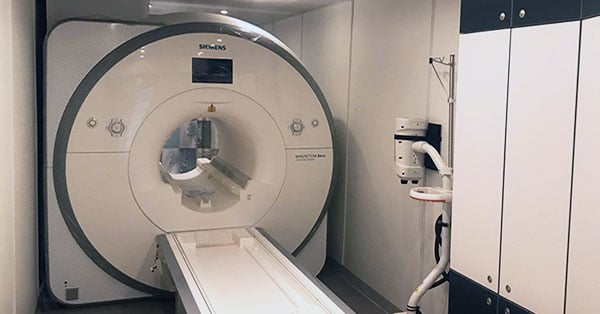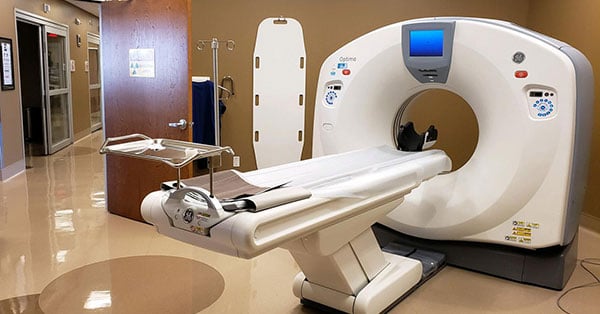
January 2, 2020 : 3 min read
How Much is My MRI Worth? It’s Easier to Figure Out Than You Think
Have you found yourself asking “How much is my MRI machine worth?” lately?
In today’s secondary market imaging equipment in general, and MRI Machines specifically, can range widely in value. If you have a system for sale, or are considering upgrading in the next 3-6 months, you owe it to yourself to get a read on today’s market value.
This is a simple process and, if you have the right information at hand, there are equipment market valuation resources out there (Block Imaging is one) that can value your system quickly, accurately, and at no charge.
The following are the pieces of information that drive the value of an MRI machine on the secondary market. Gather these details to maximize offers on your system.
Date of Manufacture
Keep in mind, it’s a global marketplace.
Older systems that might not be interesting to buyers in the USA or Europe can (and do) have value elsewhere, but the year of manufacture does make a difference. If you are asking for a value for your equipment, please know the year it was manufactured (not just the year of installation or the year you bought it).
You can usually get this information right off the back of the gantry or, if you’re adventuresome and want to remove the cover (have someone help you), it is stamped right on the magnet itself. While you’re "under the hood", you may as well check the age of the coldhead.
Magnet and Gradient Strength
In the USA and other developed countries, there is always competition up the street and marketing can make a difference. Having said that, from a “magnet” perspective, 1.5 Tesla is still king and 1.5T scanners constitute the vast majority of all pre-owned MRI machines sold worldwide.
The difference maker from a power standpoint is the gradients. Know your gradient amplitude (mT/m) and the slew rate (mT/m/ms). Gradient package buzzwords like “Echospeed” (GE), “Quantum” (Siemens), and “Nova” (Philips) are difference makers too, so be sure to include them as well.
Coils
Got some MRI coils that are outside the standard set?
Breast, Cardiac, Angio, and Neurovascular can make a difference to potential buyers and can enhance the value of your system.
Don’t just list the coils from the invoice or original quote. It's recommended that you take a, in-person inventory or verify with the MRI tech to make sure the list of coils you submit for valuation is 100% accurate.
It saves headaches later if an inspection identifies missing or broken coils. If you have 8-channel coils (or greater) please note that.
Workstations and Software Packages
Knowing the current system operating software not only brings you a higher selling price, it could save the potential buyer LOTS of money in upgrade costs. It also confirms that the system is, well… current.
If you don’t know this off-hand it will typically show up on your screen during boot-up.
While you’re in your settings or service menu, click on the “options” tab to view and photograph the list of all the current enabled software options. Software package buzzwords like “EXCITE” (GE), “TIM” (Siemens), and “Achieva” (Philips) all make a difference in value and should be listed as well.
Don’t forget to list processing workstations like AWW or Leonardo if you are including them.
The Exit Pathway
Part of determining what a buyer will pay for your system involves determining how much they will need to spend to get it out of your facility and into theirs. If there are any complicated particulars in getting your system out you can expect a lower offer to offset the extra costs the buyer will need to pay for logistics.
For example, rigging will cost much less to get an MRI scanner out of a ground-floor scan suite than to cut open a second-floor wall and lower one down to the ground on a crane.
To help make sure there are no surprises for you or your buyer, be sure to photograph the most likely path of exit for the scanner and include that when you submit your details for valuation.
The Takeaway
That’s it!
That’s enough information to get a great read on the market value of your system and answer the question How Much is My MRI Worth?
While you're gathering all this, get out your smartphone and take some pictures of the system too. A solid visual impression of the system's condition can also have a significant effect on your system's value.
So, all the best with your project, and, at the end of the day, remember this:
No one who plays daily in the secondary market lives in a vacuum. In today’s flat world, no one “steals” anything, information flows freely, and it's a relatively small community. If you’re dealing with a reputable company you can usually assume the values you’re getting are in line with the market.
You might be pleasantly surprised.
If you're interested in answering the question "How Much is My MRI Worth?", feel free to submit your request for an equipment market valuation. We'd be glad to help!

Steve Rentz
Steve Rentz is the Product Manager for MRI Scanners at Block Imaging. Steve's goal is to earn each customer's trust and business by specifically addressing the needs of their unique project. When Steve is not helping customers with their MRI needs, he enjoys running, swimming, and woodworking.






